
The Pentatomoidea are a superfamily of insects in the suborder Heteroptera of the order Hemiptera. As hemipterans, they possess a common arrangement of sucking mouthparts. The roughly 7000 species under Pentatomoidea are divided into 21 families. Among these are the stink bugs and shield bugs, jewel bugs, giant shield bugs, and burrower bugs.
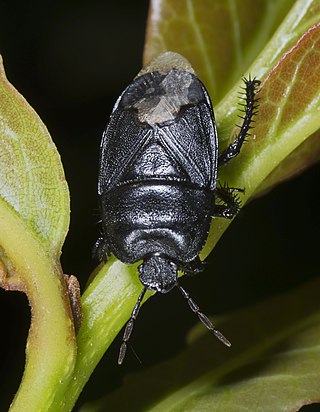
Cydnidae are a family of pentatomoid bugs, known by common names including burrowing bugs or burrower bugs. As the common name would suggest, many members of the group live a subterranean lifestyle, burrowing into soil using their head and forelegs, only emerging to mate and then laying their eggs in soil. Other members of the group are not burrowers, and live above the soil layer, often in close association with plants. Several species are known as agricultural pests.

Tritomegas bicolor, the pied shield bug, is a species of burrowing bug found in Europe. The adult is black and white and 5.5–7 mm (0.22–0.28 in) long.

Oxycarenus lavaterae, common name lime seed bug, is a species of ground bug of the family Lygaeidae, subfamily Oxycareninae.

Spilostethus pandurus is a species of "seed bugs" belonging to the family Lygaeidae, subfamily Lygaeinae.
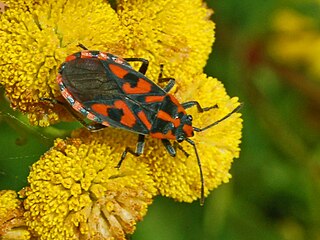
Spilostethus saxatilis is a species of bugs belonging to the family Lygaeidae, subfamily Lygaeinae.

Capsodes flavomarginatus is a species of plant bug belonging to the family Miridae, subfamily Mirinae.

Deraeocoris schach is a species of plant bugs belonging to the family Miridae, subfamily Deraeocorinae.

Lygus pratensis is a species of plant bug belonging to the family Miridae.

Dionconotus neglectus is a plant bug belonging to the family Miridae, subfamily Mirinae. The species was first described by Johan Christian Fabricius in 1798.

Stagonomus venustissimus, common name woundwort shieldbug, is a species of shieldbug belonging to the family Pentatomidae, subfamily Pentatominae.

Coptosoma scutellatum, the soot sprite, is a species of true bugs belonging to the family Plataspidae, subfamily Plataspinae.

Lygaeus equestris, common name black-and-red-bug, is a species of ground bugs belonging to the family Lygaeidae, subfamily Lygaeinae.

Macrotylus quadrilineatus is a species of plant bug belonging to the family Miridae, subfamily Phylinae.
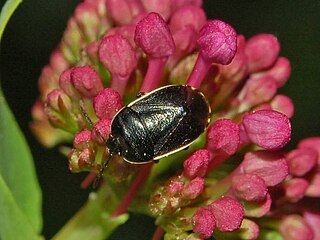
Sehirus is a genus of burrowing bugs belonging to the family Cydnidae, subfamily Sehirinae.

Piezodorus lituratus, the gorse shield bug, is a species of Pentatomidae, a family of shield bugs.

Peribalus strictus, common name Vernal Shieldbug, is a species of shield bugs in the family Pentatomidae.

Sehirus luctuosus, the Forget-me-not Bug, is a burrowing shieldbug belonging to the family Cydnidae. It is found from Europe to Central Asia.In Central Europe it is widespread and not uncommon. They are found in the Alps on sunny slopes up to almost 2000 meters above sea level.
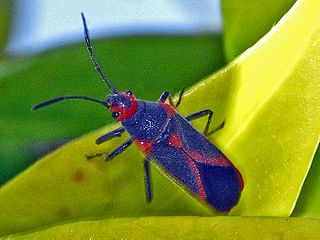
Caenocoris nerii, common name oleander seedbug, is a species of ground bugs in the insect family Lygaeidae.
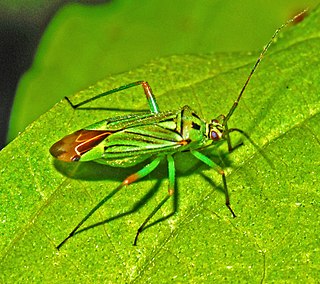
Mermitelocerus schmidtii is a species of plant bug belonging to the family Miridae.






















